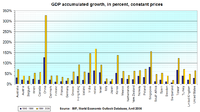
Photo from wikipedia
This study investigates the function and contribution of the cultural industries’ agglomeration to green economic growth. Based on the quasi-natural experiment of the “provincial cultural industry park” selection policy, we… Click to show full abstract
This study investigates the function and contribution of the cultural industries’ agglomeration to green economic growth. Based on the quasi-natural experiment of the “provincial cultural industry park” selection policy, we use the panel data of 279 prefecture-level cities from 2004 to 2019, and the multi-period difference-in-differences method, to empirically test the impact of cultural industry parks on green economic growth. The basic results support that urban GTFP increases by about 1.5% on average after constructing a provincial cultural industry park. The regional heterogeneity test revealed that the green economic growth effect is more robust in the eastern and human geography regions of northeast cities. Further research on the influencing mechanisms found that the regional economic development level and economic openness, cultural education level, upgrade industry structure, and digital technology development level support the driving effect of cultural industry parks on the development of the green economy. The research in this article gives empirical support to the driving effect of cultural industry parks on regional green economic growth. It proposes that various regions strengthen financial support, improve cultural and educational levels, and develop digital technology to promote green economic growth.
Journal Title: Sustainability
Year Published: 2023
Link to full text (if available)
Share on Social Media: Sign Up to like & get
recommendations!